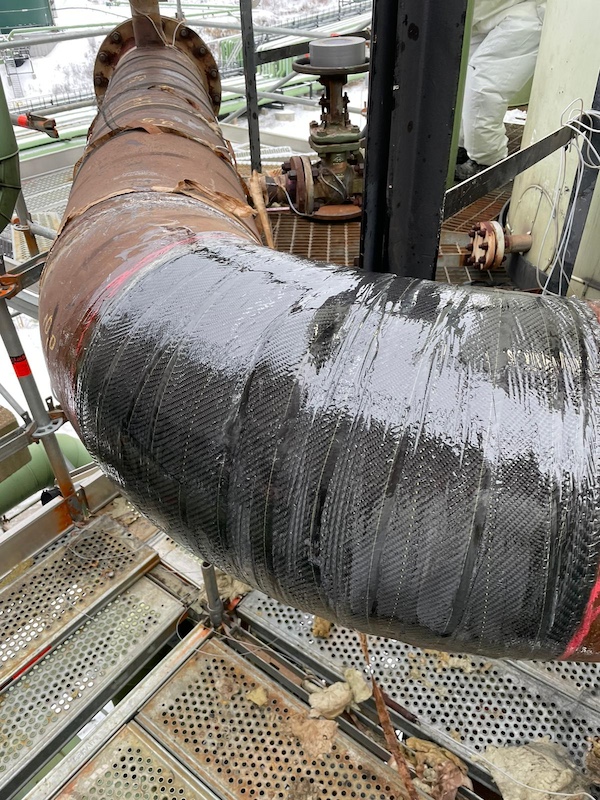Composite repairs have emerged as a widely adopted method for strengthening the structural integrity of pipes and vessels while simultaneously providing a protective barrier against corrosion. However, the success of these repairs hinges on a clear understanding of the distinction between external and internal wall loss repairs. ASME PCC-2 outlines two distinct design cases for corrosion—Type A and Type B—with varying calculations for composite repairs that can significantly impact the repair's efficacy if improperly chosen. Type A repairs are designed for non-leaking components with a remaining wall thickness of 0.04 inches or more throughout the repair's lifespan. These repairs are applicable to pipes experiencing external corrosion that hasn't penetrated entirely through the wall or is not actively leaking. The primary focus here is restoring the component’s structural integrity, with the composite material also helping to prevent further wall loss in external corrosion scenarios. Type B repairs, however, are intended for situations involving leaks or components with wall thicknesses below 0.04 inches at any point during the repair period. Components that have been temporarily patched after leaking should also be categorized as Type B repairs. Internal corrosion cases typically fall under this category unless the corrosion rate indicates that the remaining wall thickness will consistently remain above 0.04 inches. Unlike Type A repairs, Type B repairs necessitate both sealing the through-wall defect and reinforcing the structure. Proper surface preparation is crucial to ensure the adhesive bonds effectively, which is vital for the repair’s performance. Type B repairs can be further divided into three defect categories: circular or near-circular, circumferential slot, and axial slot. Each category requires tailored repair approaches and calculations: While ASME PCC-2 doesn’t specify pressure limits for Type B repairs, it’s essential to consider pressure during the repair calculations. It’s recommended to use a maximum pressure limit of 500 psi in these calculations when applying composites for Type B repairs. A frequent oversight in the repair process occurs when the design calculations don’t match the actual defect. For Type B repairs, both Type A design calculations (for structural reinforcement) and Type B defect calculations are necessary. Type A calculations might suggest fewer layers than Type B calculations, but failing to recognize this difference could result in approving only a Type A calculation for a Type B repair, ultimately leading to composite failure over time. It’s critical to carefully review design calculations to ensure the repair’s success. When assessing design packages, ask the following questions: In a past project, an owner-operator encountered a corroded pipe classified as a Type B repair due to severe external corrosion caused by corrosion under insulation (CUI). The corrosion defect appeared as a circumferential slot because of the band and patch used to stop the leak. To successfully repair the pipe, the entire area covered by the patch needed to be treated as part of the defect. Mastering the intricacies of repairs under ASME PCC-2 demands a deep comprehension of the differences between Type A and Type B repairs. Misalignments between design calculations and actual defects can cause ineffective repairs and eventual composite failures. Ensuring accuracy in design packages is essential for meeting specific repair requirements. HJ3 specializes in understanding the distinctions between Type A and Type B repairs and can collaborate with you to develop tailored solutions addressing your unique needs. Contact us to learn more about our services. German Series Wash Pump,German Series Washer Pump,German Series Windshield Wash Pump,Washer Fluid Pumps ruian city yixuan auto parts co.,ltd , https://www.yixuanauto.comType A vs Type B Repairs
Understanding Type B Repair Design Categories
Aligning Design Calculations with the Repair
Addressing Corrosion for a Type B Repair


Understanding Type A and Type B Repairs Under ASME PCC-2
Next Article
Lightning strike in Glenview, 8-25-14